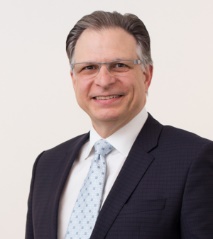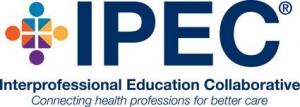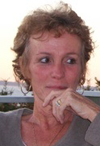Integrative institution jumps into interprofessionalism and culture change
By John Weeks
by John Weeks, Publisher/Editor of The Integrator Blog News and Reports
Stress and the culture that causes burnout are big news in academic medicine and medical delivery. So too are safety and quality of care concerns that urge the breaking down of silos to foster mutual respect and team care among diverse professionals. At the integrative health-focused Southern California University of Health Sciences (SCU), these topics of interprofessionalism and culture have recently become subjects receiving commendation from the university’s accreditors.
 An early step in these not unrelated challenges came when SCU president John Scaringe, DC, EdD learned in 2012 that the councils of colleges of the six most significant academic health disciplines—medicine, nursing, pharmacy, dentistry, osteopathy, and public health—had banded together to form the Interprofessional Education Collaborative (IPEC). Why not inject his academic leaders in chiropractic, acupuncture, Ayurvedic medicine, sports nutrition and, more recently, integrative physicians assistants, into those learning processes?
An early step in these not unrelated challenges came when SCU president John Scaringe, DC, EdD learned in 2012 that the councils of colleges of the six most significant academic health disciplines—medicine, nursing, pharmacy, dentistry, osteopathy, and public health—had banded together to form the Interprofessional Education Collaborative (IPEC). Why not inject his academic leaders in chiropractic, acupuncture, Ayurvedic medicine, sports nutrition and, more recently, integrative physicians assistants, into those learning processes?
IPEC’s mission is defined as, “… working in collaboration with academic institutions, [IPEC] will promote, encourage and support efforts to prepare future health professionals so that they enter the workforce ready for interprofessional collaborative practice that helps to ensure the health of individuals and populations.”
 This language roughly parallels SCU’s promise on its own site. “Students from all programs come together for core science classes giving them appreciation for other types of medical professions. Once they leave SCU, they are thoroughly prepared to thrive in an ever-changing inter-professional healthcare delivery system.”
This language roughly parallels SCU’s promise on its own site. “Students from all programs come together for core science classes giving them appreciation for other types of medical professions. Once they leave SCU, they are thoroughly prepared to thrive in an ever-changing inter-professional healthcare delivery system.”
Over the last half decade, Scaringe estimates SCU has invested in sending over 40 faculty and administrators in teams to participate in the IPEC Institute’s multi-day, multi-organizational training, which includes clinical workshops focused on team care. Classroom faculty attended IPEC sessions on how to stimulate interprofessional models. When called for this article, Scaringe had just sent e-mail to his dean asking for faculty members to nominate to participate in IPEC’s first Dean’s Leadership Program.
 “[The participants] come back charged up and rejuvenated every time,” Scaringe reflects. Part of their excitement is that his faculty gains perspective, from observing and working with others, “on all that we are attempting and accomplishing here.”
“[The participants] come back charged up and rejuvenated every time,” Scaringe reflects. Part of their excitement is that his faculty gains perspective, from observing and working with others, “on all that we are attempting and accomplishing here.”
Scaringe checks off the three criteria deemed necessary to take on the academic and clinical process of moving practitioners out of silos and into teams, noting SCU’s status with it.
- “Our board and senior team are fully committed.”
- “A school needs to get students into seats together – and we’ve accomplished that.” He notes that in nearly 40 percent of the SCU’s curriculum for physician’s assistants the P.A. student sit “side-by-side with chiropractic and acupuncture students.” He recalls that the first years in getting the students into the same room were quite difficult and there were “a lot of clinks to get it done.”
- “Fine-tuning is the third, and that’s where we are. We’re trying to figure out how to make the most of this. I expect the work will accelerate.”
Scaringe said he has heard some new PA students, now only part way through their first year, speaking of how much better they understand potential roles for chiropractors and acupuncturists. “I couldn’t have scripted it better,” Scaringe said.
Addressing culture
 Scaringe shared that for years that he has “done a lot of reading on organizational leadership.” The study landed him squarely on the importance of value clarity. This process is then linked to finding clarity on what are “value behaviors.” These can “be a tool for supervisors.” He brought in long-time integrative health leader Pamela Snider, ND as his special assistant to serve SCU as its “Chief Culture Officer.” The idea, he said, was not to “change the model but to add, again, more clarity.”
Scaringe shared that for years that he has “done a lot of reading on organizational leadership.” The study landed him squarely on the importance of value clarity. This process is then linked to finding clarity on what are “value behaviors.” These can “be a tool for supervisors.” He brought in long-time integrative health leader Pamela Snider, ND as his special assistant to serve SCU as its “Chief Culture Officer.” The idea, he said, was not to “change the model but to add, again, more clarity.”
Snider used a volunteer method to build the university’s “Culture Crew” – her core team. “We got most areas—faculty, stuff, students—vested via volunteers,” Scaringe recalls. A January 2017 email from Snider to the SCU community when the initiative broadened out described the work as “a focused, campus-wide initiative to establish specific, agreed upon Valued Behaviors for each amazing SCU Value.” The goal was to access everyone’s “dreams and your team’s ideas and best practices … to co-create a climate and culture which is sustainable, impactful, engaging, and reflects who we want ourselves and SCU to be.”
That the work in both arenas is having a positive impact was evident in Spring 2017 reviews from two SCU’s accrediting agencies. The regional, institutional agency, Western Association of Schools and Colleges (WASC) and the Council on Chiropractic Education “both made a point of commenting on the culture, the interprofessionalism, and the integrative model,” said Scaringe. The accreditors noted that their interviews with diverse members of the SCU community found the values clarity permeating their responses. WASC gave SCU a formal commendation on the culture work Snider led.
“I’m not satisfied with where we are,” Scaringe concluded, “but I am thrilled with our process and progress.”
| Type of Learning | Objectives | Outcome |
| Flexner/1910
Informative |
Information, skills | Experts |
| Post WWII-1950
Formative |
Socialization, values | Professionals |
| Today/2010
Transformative |
Leadership attributes | Change agents |
Comment: In 1985, I learned a sad joke among academics while talking to an accreditor for the regional accrediting body that was then called the Northwest Association of Schools and Colleges. I was part of a team working on getting them to, for the first time, accredit an institution with a naturopathic medical program. The joke-line the accreditor shared is that it is a trait of most people drawn to education that, while they love knowledge, “no one wants to do anything for the first time.” The institutions are famously tough to change or transform—dogsleds with their runners frozen. Every credit hour is an iceberg, with multiple vested interests below the surface holding what is in place. The weight of these historic anchors creates a self-serving conservatism that resists change.
The systematic work at SCU led by Scaringe and Snider is the most thorough effort I have seen in the integrative health community to break through the dead weight of routine and expectation and create a new culture of interprofessional and integrative practice. This appears a responsive strategy to the 2010 call to academics globally in the Lancet’s Health Professionals for a New Century: Transforming education to strengthen health systems in an interdependent world. The SCU work appears to be good steps toward “transformative learning” to imbue “leadership attributes” to produce “change agents.”
















